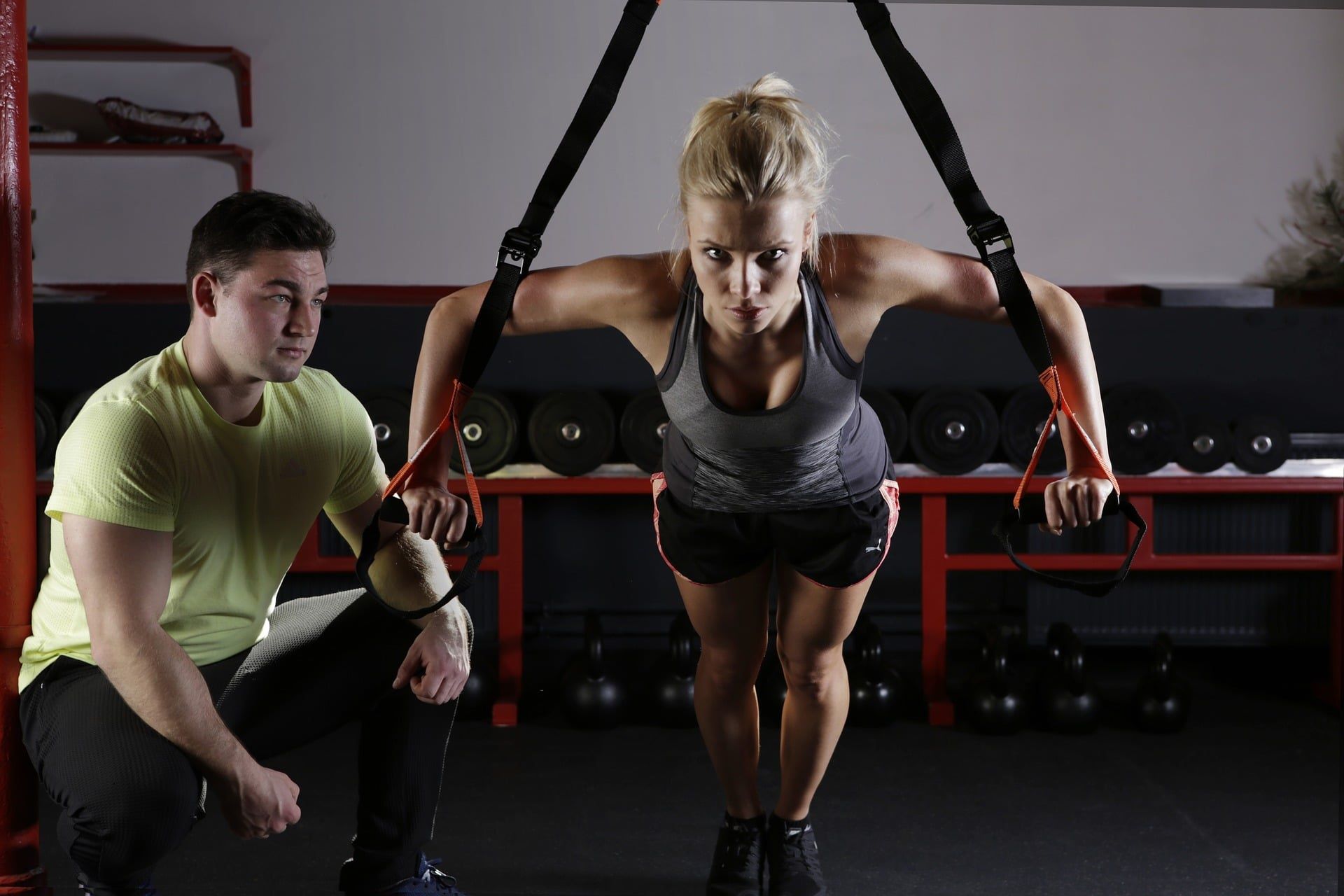Home>Misc>Featured>Which Is A Primary Adaptation Of The Stabilization Endurance Phase?


Featured
Which Is A Primary Adaptation Of The Stabilization Endurance Phase?
Modified: January 2, 2024
Discover the primary adaptation of the stabilization endurance phase. Featured exercises and techniques to improve your stability and endurance.
Introduction
The Stabilization Endurance Phase is a key component of any effective training program. This phase focuses on building stability and endurance in the body’s muscles and joints. It plays a vital role in preparing the body for more intense workouts and activities, while also reducing the risk of injury. By targeting the muscles responsible for stabilization, this phase helps improve overall control and balance, allowing individuals to perform movements with greater control and efficiency.
During the Stabilization Endurance Phase, the primary goal is to enhance neuromuscular efficiency. This involves improving the coordination and communication between the muscles and the nervous system, which in turn leads to greater stability and endurance. It is a phase that bridges the gap between stability and strength training, laying a solid foundation for more advanced exercises.
This phase is especially important for individuals who have been sedentary or inactive for a period of time, as it helps recondition the body and build a strong base before progressing to more intense workouts. It is also beneficial for athletes who engage in repetitive and high-impact activities, as it helps prevent overuse injuries and improves overall performance.
In this article, we will explore the primary adaptation of the Stabilization Endurance Phase in more detail. We will delve into the specific benefits and exercises associated with this phase, as well as provide insights on how to incorporate it into your training regimen. Whether you are a beginner looking to establish a solid foundation or an experienced athlete seeking to prevent injuries and enhance performance, understanding the primary adaptation of the Stabilization Endurance Phase is essential for achieving your fitness goals.
Definition of the Stabilization Endurance Phase
The Stabilization Endurance Phase is a specific training phase that focuses on improving stability, muscular endurance, and neuromuscular control. It is typically the first phase in a well-designed training program and is aimed at laying a solid foundation for further strength and conditioning work. This phase is characterized by exercises that challenge balance, coordination, and core stability, targeting the deep stabilizing muscles.
The primary objective of the Stabilization Endurance Phase is to improve the body’s ability to stabilize and control movement. This is achieved by targeting the smaller, stabilizing muscles around the joints, such as the core muscles, hips, shoulders, and ankles. Through a combination of slow and controlled movements, isometric holds, and proprioceptive training, individuals develop better control over their body’s positioning and movements, ultimately enhancing their overall stability and reducing the risk of injuries.
During the Stabilization Endurance Phase, exercises often involve unstable surfaces, such as stability balls, BOSU balls, or balance boards. These unstable surfaces require the body to engage more muscles to maintain balance and stability, thus intensifying the training effect. Additionally, exercises may incorporate different variations of planks, lunges, squats, and other functional movements that challenge multiple muscle groups simultaneously. The emphasis is on performing the exercises with proper form, focusing on quality over quantity.
Another key characteristic of the Stabilization Endurance Phase is the high repetition range. Typically, exercises are performed in the range of 12 to 25 repetitions per set, with relatively lower weights or resistance. This promotes muscular endurance and helps develop the endurance capacity of the stabilizing muscles, allowing individuals to maintain stability and control over an extended period of time.
Overall, the Stabilization Endurance Phase serves as the foundation for further strength and conditioning training. It enhances the body’s ability to stabilize and control movement, improving neuromuscular control, and reducing the risk of injuries. By targeting the stabilizing muscles and focusing on balance, coordination, and core stability, this phase establishes a solid base for more advanced exercises in the future.
Importance of Adaptation in the Stabilization Endurance Phase
The process of adaptation is a fundamental aspect of any training program, and it holds particular significance in the Stabilization Endurance Phase. Adaptation refers to the body’s ability to respond and adjust to the demands placed upon it through physical training. In the context of the Stabilization Endurance Phase, adaptation plays a crucial role in improving stability, muscular endurance, and overall performance.
One of the primary reasons adaptation is important in this phase is the need to strengthen the body’s stabilizing muscles. These muscles, including the core muscles, help maintain proper alignment and control during movement. By gradually increasing the workload and intensity of exercises in this phase, the stabilizing muscles become stronger and better equipped to handle the demands of more advanced workouts. This adaptation leads to improved stability in the joints and a reduced risk of injuries, allowing individuals to move with greater control and confidence.
Adaptation in the Stabilization Endurance Phase also improves muscular endurance. Muscular endurance is the ability of a muscle or group of muscles to sustain contractions over a prolonged period of time. Through high repetition exercises and challenging stability-based movements, the muscles develop the capacity to endure longer periods of contraction without fatigue. This adaptation is particularly beneficial for activities that involve repetitive motions or require sustained muscle engagement, such as running, cycling, or functional training.
Furthermore, adaptation in this phase helps enhance neuromuscular efficiency. The coordination between the muscles and the nervous system improves, enabling smoother and more precise movements. This neuromuscular adaptation is achieved through the repetition and deliberate practice of stabilization exercises, which help refine motor patterns and enhance proprioception. As a result, individuals experience improved coordination, balance, and control in their movements.
The Stabilization Endurance Phase is also an opportune time for the body to adapt to unstable training surfaces. By incorporating exercises on unstable surfaces, such as stability balls or balance boards, individuals challenge their balance and proprioception even further. This adaptation helps strengthen the deep stabilizing muscles and promotes greater stability and control in a wide range of activities.
Overall, adaptation is crucial in the Stabilization Endurance Phase as it leads to improvements in stability, muscular endurance, neuromuscular control, and overall performance. By gradually increasing the demands placed upon the body and allowing it to adapt, individuals can build a solid foundation for further progress in their fitness journey.
Primary Adaptation of the Stabilization Endurance Phase
The Stabilization Endurance Phase of training elicits several primary adaptations in the body. These adaptations are crucial for improving stability, muscular endurance, and neuromuscular control, ultimately leading to better performance and reduced risk of injuries.
One of the key adaptations in this phase is the strengthening of the body’s stabilizing muscles. The stabilizing muscles, including the core muscles, play a crucial role in maintaining proper alignment and control during movement. Through targeted exercises in the Stabilization Endurance Phase, such as planks, bird dogs, and stability ball exercises, these muscles become stronger and more efficient at stabilizing the joints. This adaptation enhances overall stability and reduces the likelihood of experiencing imbalances or compensatory movements.
Additionally, the Stabilization Endurance Phase focuses on improving muscular endurance. Muscular endurance is the ability of muscles to sustain contractions over an extended period of time. By performing exercises with a high repetition range and controlled tempos, individuals can enhance the endurance capacity of their muscles. This adaptation allows them to perform movements for longer durations without experiencing muscular fatigue. Improved muscular endurance is particularly beneficial for activities that require sustained muscle engagement, such as endurance sports or repetitive functional movements.
Another primary adaptation of the Stabilization Endurance Phase is the enhancement of neuromuscular control. Neuromuscular control refers to the coordination and communication between the muscles and the nervous system. Through the practice of stabilization exercises on unstable surfaces, individuals improve their proprioception and fine-tune their motor patterns. This adaptation leads to better coordination, balance, and control over movements, which transfers to various activities, ranging from sports performance to daily tasks.
Moreover, the Stabilization Endurance Phase induces adaptations in joint stability. By challenging the body’s stability on unstable surfaces, the ligaments and joint structures adapt to become more robust and resilient. This adaptation helps improve the overall joint stability, reducing the risk of injuries during dynamic movements or sudden changes in direction. It also promotes better joint alignment, which is vital for maintaining proper mechanics during exercises and activities.
Overall, the primary adaptations of the Stabilization Endurance Phase include strengthening the stabilizing muscles, improving muscular endurance, enhancing neuromuscular control, and increasing joint stability. These adaptations work synergistically to create a solid foundation for further strength and conditioning training, allowing individuals to perform movements with greater efficiency, stability, and reduced risk of injuries.
Conclusion
The Stabilization Endurance Phase is a vital component of any training program, serving as the foundation for building stability, muscular endurance, and neuromuscular control. Through targeted exercises that challenge balance, coordination, and core stability, individuals can experience significant adaptations in their bodies, leading to improved performance and reduced risk of injuries.
Throughout this phase, the primary adaptations include the strengthening of stabilizing muscles, enhancing muscular endurance, improving neuromuscular control, and increasing joint stability. These adaptations work together to create a solid foundation for further progress in strength and conditioning training.
By targeting the smaller, stabilizing muscles around the joints, individuals improve their overall stability and control during movements. This leads to better alignment and reduced risk of compensatory movements or imbalances. The focus on higher repetition ranges and controlled tempos helps develop muscular endurance, enabling individuals to sustain contractions for longer periods without experiencing fatigue. Improved neuromuscular control enhances coordination, balance, and movement precision, resulting in more efficient and controlled movements.
Additionally, the Stabilization Endurance Phase promotes joint stability, making the ligaments and joint structures more resilient and better able to withstand dynamic movements. This adaptation reduces the risk of injuries and ensures proper joint mechanics during exercises and activities.
Understanding the importance of adaptation in the Stabilization Endurance Phase allows individuals to approach their training with a strategic mindset, progressively increasing the demands placed on their bodies and allowing for optimal improvement. Incorporating exercises on unstable surfaces and focusing on proper form and technique further enhances the effectiveness of this phase.
Whether you are a beginner seeking to establish a solid foundation or an experienced athlete looking to optimize your performance, the Stabilization Endurance Phase is an essential component of your training regimen. By prioritizing stability, muscular endurance, and neuromuscular control, you can set yourself up for long-term success and injury prevention.
Incorporate the Stabilization Endurance Phase into your training program and experience the primary adaptations that will enhance your stability, endurance, and overall performance. By investing time and effort in this phase, you will build a strong foundation and pave the way for future progress in your fitness journey.









